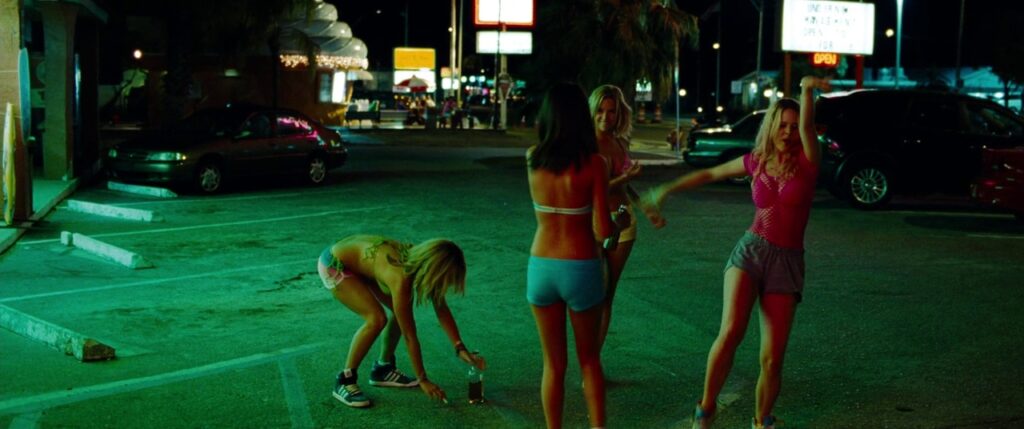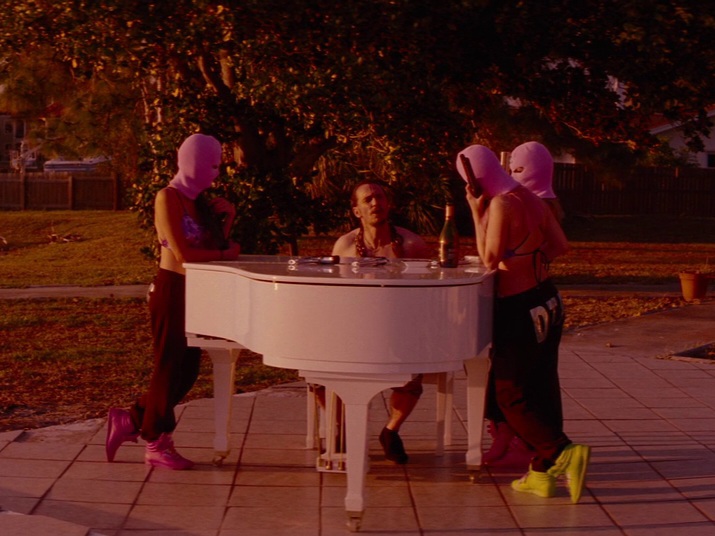The subjective nature of art often leads to differing opinions and interpretations. One such film that polarized my filmschool professors was “Spring Breakers” directed by Harmony Korine. Released in 2012, the film presents a controversial exploration of youth culture and hedonism, pushing the boundaries of traditional narrative structure and challenging societal norms. As a student, I witnessed the heated debates and contrasting viewpoints surrounding this film, which shed light on the power of cinema to provoke intense reactions and stir discussion. This article aims to delve into the divided opinions of my filmschool professors regarding “Spring Breakers” and explore the diverse perspectives that emerged.
“Spring Breakers” follows a group of college girls, Candy (Vanessa Hudgens), Brit (Ashley Benson), Cotty (Rachel Korine), and Faith (Selena Gomez), as they embark on a hedonistic spring break trip to Florida. Seeking freedom from their monotonous lives, they encounter an enigmatic drug dealer named Alien (James Franco), whose criminal lifestyle provides them with the thrill they desire. As the story unfolds, themes such as the pursuit of excitement, the erosion of morality, and the emptiness of superficial experiences are explored, making “Spring Breakers” a thought-provoking and polarizing film.
The Divide Among Professors
In my filmschool, “Spring Breakers” ignited passionate discussions, exposing the distinct perspectives held by professors. On one side, some viewed the film as a glorification of debauchery and violence, arguing that it illustrated society’s moral decay without offering any compelling critique. These professors, affected by the explicit content and morally ambiguous characters, believed “Spring Breakers” to be mere exploitative cinema.
On the other hand, proponents of the film argued that Korine’s work was an audacious and provocative critique of modern culture. They appreciated the film’s unconventional style, the subversion of generic storytelling, and the exploration of themes often ignored by mainstream cinema. These professors believed that “Spring Breakers” cleverly exposed the darker aspects of societal obsession with fame, materialism, and the desperation to escape from mundane existence.
Challenging Narrative Structure
One aspect of “Spring Breakers” that divided my professors was its non-linear narrative structure, with fragmented scenes and overlapping timelines. Traditional storytelling conventions were cast aside, presenting a disorienting and impressionistic portrait of the characters’ experiences. Some professors praised this bold departure from convention, highlighting that the disorientation reflected the chaotic and fragmented mindset of the protagonists. They appreciated that the film challenged audiences to process and interpret events in their own subjective manner.
Conversely, opposing professors argued that the non-linear narrative hindered their ability to engage with the story. They found it difficult to connect emotionally with the characters and believed that the disjointed structure detracted from the overall cohesiveness of the film.

Visual Style and Symbolism
The visual aesthetic of “Spring Breakers” played a crucial role in dividing opinions as well. Supporters admired the vibrant, neon-soaked cinematography by Benoît Debie that captured the sensory overload of spring break, injecting energy and vitality into the film. They argued that the visual style was a deliberate artistic choice to enhance the exploration of youth culture and its superficial allure.
On the contrary, detractors claimed that the flashy visuals were merely a distraction, masking the lack of substance beneath the surface. They argued that the excessive use of visual effects and stylistic choices hindered the film’s ability to convey a profound message.
Exploring Taboos
One of the most controversial aspects of “Spring Breakers” was its unapologetic portrayal of sex, drugs, and violence. The film delves deep into the hedonism and depravity that exists within youth culture, testing the boundaries of artistic expression. Supporters argued that these graphic scenes were essential in exposing the dark underbelly of the characters’ experiences and generating the intended shock value.

However, some professors found the explicit content excessive and gratuitous. They argued that the film relied too heavily on provocative imagery, losing sight of the underlying social commentary it aimed to convey. As a result, they dismissed “Spring Breakers” as a shallow and exploitative endeavor rather than a profound work of art.
Conclusion
While the film “Spring Breakers” may have divided my filmschool professors, it undeniably served as a catalyst for critical discourse and analysis. Its unconventional narrative structure, boldly stylized visuals, and exploration of taboos made “Spring Breakers” a thought-provoking and polarizing film among my professors. The arguments for and against the film highlighted the complexities of artistic interpretation and the power of cinema to stir deep emotions, challenging societal norms and expectations. Ultimately, the divisive nature of “Spring Breakers” showcased the subjective nature of filmmaking and reinforced the idea that no two individuals will interpret a film in exactly the same way.




